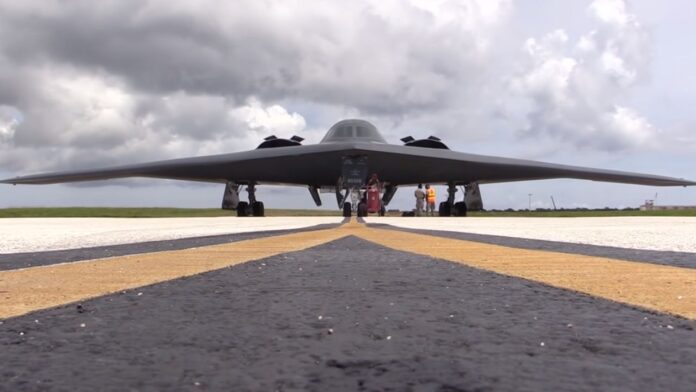Since the historic flight by the Wright brothers at Kitty Hawk, airplanes have evolved into remarkable machines with ever-increasing levels of sophistication and technology. However, this progress comes at a high cost, making aircraft some of the most expensive creations in the modern age. Additionally, safety concerns have led to complex regulations aimed at minimizing the risk of accidents, further driving up the expenses associated with aircraft design and production.
While airplanes are available for a wide range of users, from hobbyist pilots to international airlines, the most intricate and consequently costly models are developed for military purposes. The history of military aircraft traces back to the Wright brothers, with the U.S. Army’s acquisition of the 1909 Wright Military Flyer. Over time, aircraft have become integral to modern military structures, playing a crucial role in national defense and offensive operations worldwide.
Governments possess a unique advantage when it comes to funding expensive projects, as their primary focus is achieving objectives rather than generating profits. While this approach can sometimes result in wasteful spending, it has also given rise to some exceptionally costly military aircraft. Here, we’ll explore ten of the most expensive military aircraft ever built.
1. B-2 Spirit
Originally conceived as a response to Cold War tensions and the need to outmaneuver Soviet air defenses through innovative stealth technology, the B-2 Spirit, crafted by Northrop Grumman, emerged as a formidable asset within the U.S. Air Force’s arsenal. Its development commenced during a period of intense diplomatic rivalry between Eastern and Western powers. However, when it took its maiden flight in 1989, the Cold War was drawing to a close. The first operational aircraft were delivered in 1993, and its first combat deployment occurred in 1999 during NATO operations over Kosovo.
One of the standout features of the B-2 Spirit is its flying wing design, which means it lacks the traditional tail seen on most aircraft. This concept evolved from research based on captured Nazi aircraft development plans following World War II. However, the flying wing design is inherently unstable due to the absence of a rudder. It only became feasible when sophisticated computer systems were developed to continuously adjust its elevons and rudders, ensuring stability in flight.
The flying wing design significantly contributes to the B-2’s stealth capabilities. This, combined with radar-absorbing paint and a seamless, edge-free structure, makes it exceedingly difficult to detect by enemy radar. However, these advanced technologies come at a high cost to the U.S. government. Each B-2 Spirit carries a price tag of over $2 billion, making it the most expensive aircraft ever built. Additionally, the operational expenses are staggering, with a single aircraft costing an astounding $163,000 per hour of flight, excluding the considerable expense of the various weapons it can carry, including nuclear warheads.
2. SR-71 Blackbird
The origins of what would later become the iconic SR-71 Blackbird can be traced back to a CIA project initially known as the A-12 Oxcart. This initiative was prompted by the infamous incident in which U-2 spy plane pilot Gary Powers was shot down over Soviet territory. In the search for an alternative means of gathering intelligence deep within Soviet borders, intelligence officials turned to Lockheed’s experimental division, famously known as Skunk Works. They tasked Skunk Works with developing a cutting-edge aircraft for aerial espionage.
To maintain secrecy around the A-12 project, the CIA devised a rather discreet funding method. They sent checks, each amounting to up to $1 million, directly to the residence of the project’s head engineer, Kelly Johnson, in Encino. This unconventional approach ensured there was no direct paper trail leading to this covert aircraft development program.
The A-12 project proved to be a resounding success and eventually transitioned to the Air Force, where it played a significant role in various conflicts, including the Vietnam War. The Air Force’s SR-71 Blackbird boasted remarkable capabilities, with a top speed of Mach 3.3 and a service ceiling reaching 85,000 feet. This made it the fastest jet-powered aircraft ever to grace the skies. Notably, it lacked offensive weaponry and was exclusively utilized for reconnaissance missions.
During the 1960s, constructing each SR-71 came at a hefty cost of $34 million. This aircraft was meticulously crafted, with specialized components required for virtually every aspect of its airframe. Operating the SR-71 was an equally costly affair, with its unique fuel blend setting it apart from all other aircraft. The price tag for each hour of operation amounted to a staggering $200,000, which ultimately contributed to its retirement from service.
3. B-29 Superfortress
At the outset of World War II, the U.S. Army Air Corps boasted the B-17 Flying Fortress and B-24 Liberator as their most potent long-range bombers. While these aircraft were advanced and capable, the vast distances involved in the war in Europe and Asia necessitated something even more formidable. As early as 1939, Boeing had initiated work on the next-generation bomber, and by late 1942, the B-29 Superfortress had its inaugural flight, nearly a year after the United States declared war on Japan.
Remarkably, the B-29 had already received substantial orders even before a single one had taken to the skies. It arrived on the scene with a slew of innovative features, including a pressurized crew cabin and a centralized fire control system. It could carry a formidable payload of up to 20,000 pounds of munitions, striking targets up to 1,500 miles away from its base. A total of 3,980 of these aircraft were manufactured, and they played a crucial role in bombing campaigns across every theater of the war, proving to be a formidable weapon against the Axis powers.
These planes were constructed with great urgency, as wartime production diverted all available resources toward the program. In the end, the cost of each B-29, encompassing both development expenses and production costs, amounted to $930,000 per unit. This project ranked among the most costly undertakings of the war, with a total price tag of $3.7 billion, nearly double the $2 billion cost of the Manhattan Project, which notably relied on B-29s to deliver its groundbreaking weapon.
4. F-117 Nighthawk
As the concept of developing military aircraft capable of evading radar detection gained traction, the funds allocated for their research and development seemed virtually bottomless. The pioneering aircraft in this endeavor, with a radar signature as minuscule as a hummingbird, was the Lockheed F-117 Nighthawk.
The origins of the F-117 project trace back to 1975 when engineers began exploring techniques to redirect radar signals away from aircraft rather than bouncing them back to their source. However, the initial design yielded an oddly shaped plane that struggled with inherent instability. Crafting a design more akin to modern stealth aircraft required complex calculations beyond the capabilities of the computers of that era. Fortunately, the introduction of advanced computerized flight controls rectified the stability issues, and prototypes demonstrated their viability during testing.
In 1981, the Air Force received its first F-117 aircraft for evaluation and subsequently integrated them into its arsenal. However, these groundbreaking aircraft remained a well-guarded secret for several years. It wasn’t until 1988 that the Air Force publicly acknowledged the existence of a stealth aircraft. The F-117 went on to serve for many years, notably proving its effectiveness during Operation Desert Storm in 1991. In a rare incident in 1999, an F-117 piloted by Lt. Col. Dale Zelko was downed over Serbia by a surface-to-air missile when a radar operator detected it while the weapons bay doors were open, marking the only combat loss of an F-117.
The development of this revolutionary aircraft came at a significant cost to taxpayers, with each F-117 carrying a price tag of $42.6 million. These aircraft remained in service until their retirement, with all 59 units built phased out by 2008.
5. F-35 Lightning II
Currently in active service with the U.S. armed forces and several allied nations, the F-35 Lightning II stands as the most advanced multirole jet fighter in existence. Designed as the successor to the F-22 Raptor, the F-35 boasts a combination of stealth technology, highly sophisticated electronic warfare systems, and an impressive suite of traditional jet aircraft features. What truly sets it apart is its advanced communications suite and the wealth of information available to pilots, providing a distinct advantage in the modern battlefield.
The contract to develop a new stealth aircraft was awarded to Lockheed Martin in 2001, and just five years later, the inaugural flight of the F-35 took place. Deliveries of these aircraft began around 2012, with three distinct variants tailored for the Air Force, Marines, and the Navy, which received a variant equipped for vertical takeoff and landing. This comprehensive program aimed to replace multiple aging aircraft across various service branches, as well as cater to foreign customers. From the outset, the F-35 program was undoubtedly costly, but as it progressed, cost overruns plagued the contract, leading many to label it as a defense project consuming significant military resources.
As of 2023, the overall program’s estimated cost had soared to over $1.7 trillion, and its operational expenses were found to be twice that of an F/A-18E/F Super Hornet, totaling $44,000 per hour. Production of the F-35 continues, with the purchase price varying between $75 and $90 million, depending on the selected variant.
6. B1-B Lancer
The origins of the B1-B Lancer program can be traced back to the early 1970s when the U.S. Air Force expressed the need for a new high-altitude supersonic bomber. After the development of prototypes and initial testing, the program faced a setback when it was canceled in 1977. However, it was resurrected in 1981, leading to the delivery of operational aircraft by 1985. These aircraft saw their first combat missions over Iraq in 1998.
The B1-B is a sizable aircraft known for its capability to reach speeds of up to Mach 2.2 and carry an impressive payload of 74,000 pounds. Originally designed as a conventional swept-wing aircraft, it later underwent modifications to reduce its radar visibility, albeit at the cost of a reduced maximum speed of Mach 1.2. This long-range bomber boasts exceptional performance and payload capacity, thanks in part to its four General Electric turbofan engines and an impressive 137-foot wingspan when fully extended. Remarkably, despite its origins dating back to the 1970s, the B-1B Lancer remains in active service today, with no publicly disclosed retirement plans.
Being a long-range heavy bomber, the B-1B necessitates a substantial investment in technology for development and production. Moreover, it’s not an aircraft that’s produced in large quantities, further driving up its cost. Currently, the U.S. Air Force maintains 64 units of the B-1B in its inventory, each of which was procured at a price of $317 million.
7. F-22 Raptor
While the F-117 Nighthawk is often mistakenly considered the first stealth fighter, it’s important to note that it was primarily developed as an attack aircraft. The distinction of being the first true stealth fighter goes to the F-22 Raptor. This remarkable aircraft commenced its development in the early 1980s, with the first prototype taking to the skies in 1990. Initial production models entered service in 2001, and the program achieved full operational status by 2005.
Designed to outperform both the F-15 Eagle and F-16 Fighting Falcon, the F-22 was created as a multirole fighter with integral stealth features seamlessly integrated into its airframe. It stands as a fast and highly maneuverable aircraft, powered by two Pratt & Whitney engines capable of propelling it to a maximum speed of Mach 1.8. Notably, it boasts the ability to supercruise, achieving Mach 1.5 without relying on fuel-intensive afterburners. Its weaponry is stored within internal weapons bays to maintain low observability and can be equipped with up to eight guided missiles, two 1,000-pound bombs, and a 20mm Gatling gun.
Originally, the U.S. Air Force had ambitious plans to procure 648 F-22 aircraft when the project commenced in the early ’90s. However, this number was progressively reduced, first to 438 and then to 339 by 1997. Ultimately, only 195 units were built, and the program was phased out. The total cost of the program throughout its duration exceeded $79 billion, with each unit carrying a price tag of $143 million. Although the F-22 was designed primarily for air-to-air combat, it gained notoriety by downing a rogue Chinese spy balloon in early 2023, marking its first target elimination in two decades.
8. Eurofighter Typhoon
Several European nations, including the United Kingdom, Germany, Italy, and later Spain, came together in 1986 to form a consortium aimed at creating a new multirole fighter jet. Their collaborative effort was driven by the goal of leveraging their collective strengths to reduce the development costs for serial production. After years of negotiations and the evaluation and refinement of multiple designs, a final blueprint for production was approved in 1997, with the aircraft’s maiden flight taking place in 2002.
The resultant European fighter, known as the Eurofighter Typhoon, represents an advanced multirole jet featuring a distinctive delta-wing design with forward canards for added stability and twin jet engines for propulsion. While it may not possess stealth capabilities, the Eurofighter Typhoon stands as a complex and highly capable showcase of European technology. It achieves a top speed of Mach 1.7 and can carry a wide range of weapons, including guided missiles and bombs, complemented by a pair of 27mm Mauser cannons. Additionally, the Typhoon boasts advanced sensors and communication systems that enhance its situational awareness, electronic warfare capabilities, and communication functions, all contributing to its combat readiness.
Although the Typhoon was primarily developed to replace aging aircraft in the inventories of the participating nations’ air forces, it has also found buyers among foreign nations, including Austria, Kuwait, and Oman. The individual unit cost for a Typhoon stands at $117 million. However, when factoring in the development and initial procurement expenses, the overall cost per unit rises to just over $200 million.
9. C-17A Globemaster III
While sleek and sophisticated fighter jets often steal the spotlight with their hefty price tags, the true workhorses that keep the military operationally ready are the cargo haulers. In the United States, the Boeing C-17A Globemaster III reigns as the premier tractor-trailer of the skies, and its versatility was notably showcased during the tumultuous Afghanistan withdrawal in 2021 when it transported 640 refugees from Kabul airport. However, its typical mission involves transporting vital supplies and heavy equipment.
While the C-130 Hercules is the go-to aircraft for many of the U.S. military’s hauling operations, the C-17A Globemaster III takes the lead when it comes to handling exceptionally heavy and oversized cargo. Its maximum payload capacity reaches an impressive 107,900 pounds, and it frequently undertakes missions involving the delivery of tanks, MRAPs (Mine-Resistant Ambush Protected vehicles), and even other aircraft or helicopters. The cargo compartment, measuring 85 feet in length, 18 feet in width, and 12 feet in height, accommodates these sizable loads. Loading can be executed through the rear loading bay door or via the raised nose cone section. What’s more, it boasts the capability to take off and land on runways as short as 3,500 feet, a feat that surpasses the requirements of even a Boeing 737-700, which necessitates a minimum runway length of 5,500 feet.
The development of the C-17A Globemaster III commenced in the 1980s, with its first flights taking place in 1991. It has consistently proven itself as a reliable and safe aircraft. However, this prowess comes at a significant cost, with each unit carrying a price tag of $340 million, making it one of the most expensive aircraft in the American military’s inventory.
10. Dassault Rafale
Initially, France was part of the Eurofighter consortium’s plans, but it later decided to chart its own course in creating a new fighter jet. France’s aerospace industry had a rich history of crafting supersonic fighter jets, providing a solid foundation of experience.
The contract to build this new fighter was awarded to Dassault Aviation, with the first flight taking off in 1986. However, the Rafale didn’t officially enter service until 2001. The French Ministry of Defense made a strategic choice not to pursue a stealth design due to the exorbitant costs involved. Instead, they incorporated numerous low-observability technologies into the Rafale’s design. These enhancements involved modifications to various components, including air inlets, tailfin design, and the cockpit. The delta-wing configuration, supported by canards for stability at lower speeds, was complemented by aircraft carrier certification. The Rafale also boasts a fly-by-wire system with advanced flight controls and sophisticated avionics, rendering it a potent and highly advanced combat aircraft.
While the primary operators of the Rafale are the French Armed Forces, it is also available for export. Several countries, including Egypt, Qatar, and Greece, have added it to their fleets. However, Dassault has faced challenges in securing sales to certain nations, primarily due to the price tag exceeding $100 million per airframe. Notably, the fully stealth-capable American F-35 is available at a lower price, under $80 million. Nevertheless, the Rafale remains a viable option for countries facing restrictions from the U.S. Department of Defense regarding the sale of specific military hardware.


















![10 Countries With the Best Healthcare in the World [Statistical Analysis] Countries With the Best Healthcare in the World](https://articleify.com/wp-content/uploads/2025/07/Countries-With-the-Best-Healthcare-in-the-World-1-150x150.jpg)










